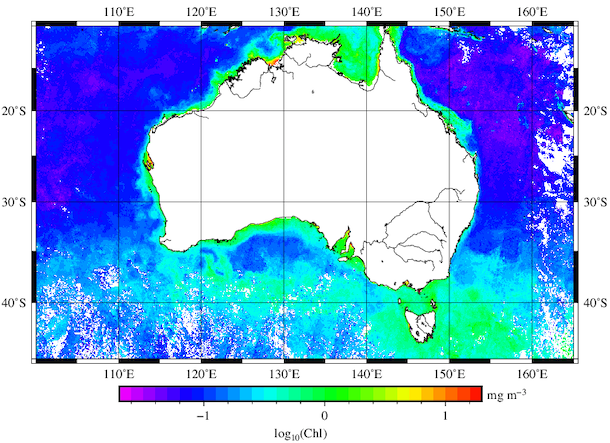Long-term Changes of Phytoplankton Around Australia
The project is about testing various algorithms for processing of data from the Sentinel3/OLCI satellite mission, and to analyse the results in terms of long-term changes in phytoplankton in oceans around Australia.
Area of science
oceanography
Systems used
Nimbus
Applications used
gfortran, gs, vi, GMT, netCDF command tools, pythonThe Challenge
Merging large amounts of Sentinel3 products into gridded products at weekly or monthly resolution.
Adapting an atmospheric correction code previously developed for the ESA ENVISAT/MERIS mission to the Sentinel3/OLCI.
Doing this over a sufficiently long time series so as to identify possible temporal trends.
The Solution
Having access to data from the Copernicus Australasian Data Hub.
Having access to flexible computing environment to test the algorithms before applying them on large amounts of data (that part having been done on the NCI).
The Outcome
We reached our objectives thanks to the flexibility offered by the Nimbus environment. Mass processing was then performed on the NCI in collaboration with CSIRO.
List of Publications
Richardson A.J, Eriksen R, Moltmann T, Hodgson-Johnston I, Wallis J.R. (2020). State and Trends of Australia’s Ocean Report, Integrated Marine Observing System (IMOS).
Available at: https://www.imosoceanreport.org.au







